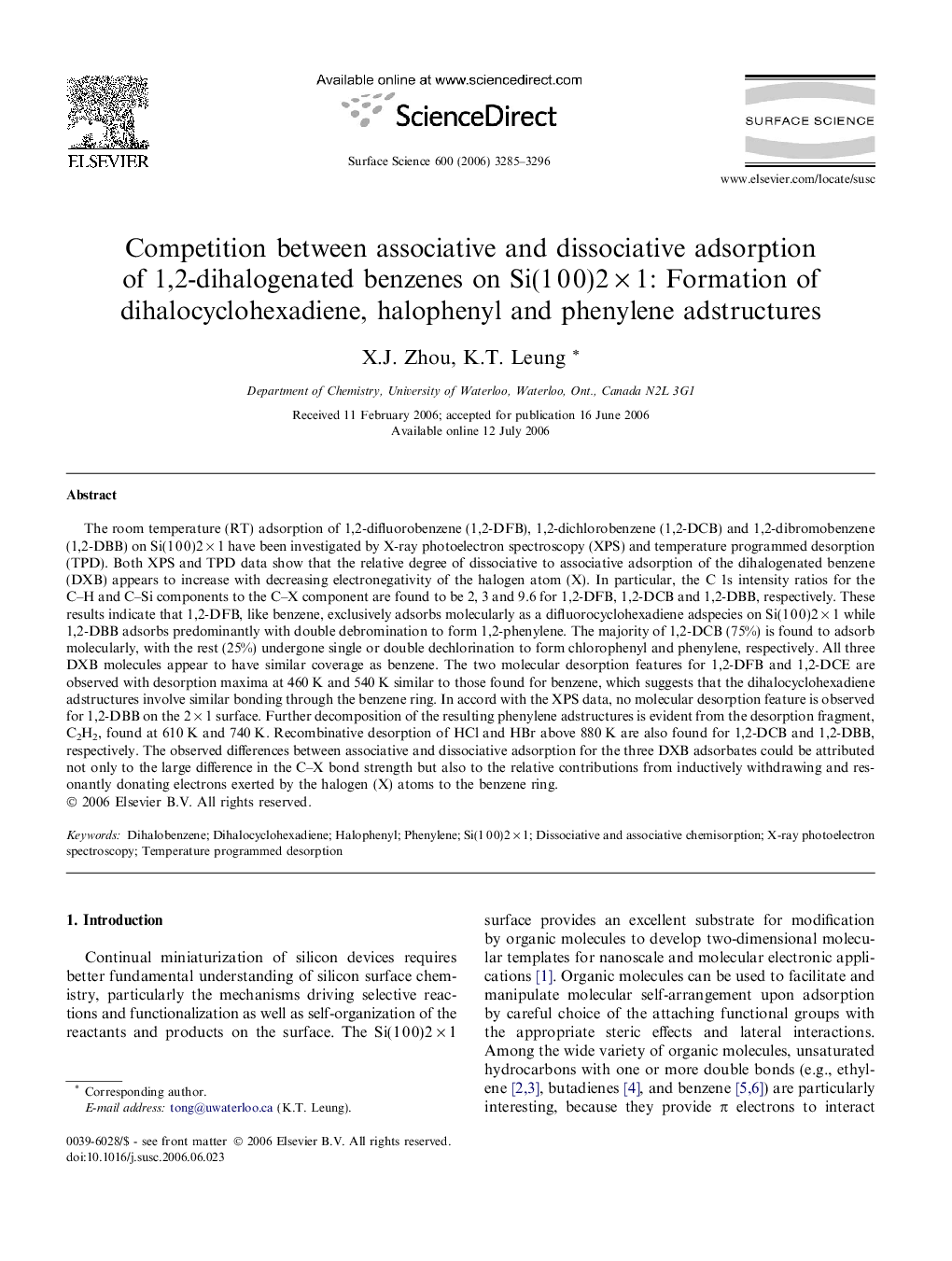| کد مقاله | کد نشریه | سال انتشار | مقاله انگلیسی | نسخه تمام متن |
|---|---|---|---|---|
| 5425492 | 1395857 | 2006 | 12 صفحه PDF | دانلود رایگان |

The room temperature (RT) adsorption of 1,2-difluorobenzene (1,2-DFB), 1,2-dichlorobenzene (1,2-DCB) and 1,2-dibromobenzene (1,2-DBB) on Si(1Â 0Â 0)2Â ÃÂ 1 have been investigated by X-ray photoelectron spectroscopy (XPS) and temperature programmed desorption (TPD). Both XPS and TPD data show that the relative degree of dissociative to associative adsorption of the dihalogenated benzene (DXB) appears to increase with decreasing electronegativity of the halogen atom (X). In particular, the C 1s intensity ratios for the C-H and C-Si components to the C-X component are found to be 2, 3 and 9.6 for 1,2-DFB, 1,2-DCB and 1,2-DBB, respectively. These results indicate that 1,2-DFB, like benzene, exclusively adsorbs molecularly as a difluorocyclohexadiene adspecies on Si(1Â 0Â 0)2Â ÃÂ 1 while 1,2-DBB adsorbs predominantly with double debromination to form 1,2-phenylene. The majority of 1,2-DCB (75%) is found to adsorb molecularly, with the rest (25%) undergone single or double dechlorination to form chlorophenyl and phenylene, respectively. All three DXB molecules appear to have similar coverage as benzene. The two molecular desorption features for 1,2-DFB and 1,2-DCE are observed with desorption maxima at 460Â K and 540Â K similar to those found for benzene, which suggests that the dihalocyclohexadiene adstructures involve similar bonding through the benzene ring. In accord with the XPS data, no molecular desorption feature is observed for 1,2-DBB on the 2Â ÃÂ 1 surface. Further decomposition of the resulting phenylene adstructures is evident from the desorption fragment, C2H2, found at 610Â K and 740Â K. Recombinative desorption of HCl and HBr above 880Â K are also found for 1,2-DCB and 1,2-DBB, respectively. The observed differences between associative and dissociative adsorption for the three DXB adsorbates could be attributed not only to the large difference in the C-X bond strength but also to the relative contributions from inductively withdrawing and resonantly donating electrons exerted by the halogen (X) atoms to the benzene ring.
Journal: Surface Science - Volume 600, Issue 16, 15 August 2006, Pages 3285-3296